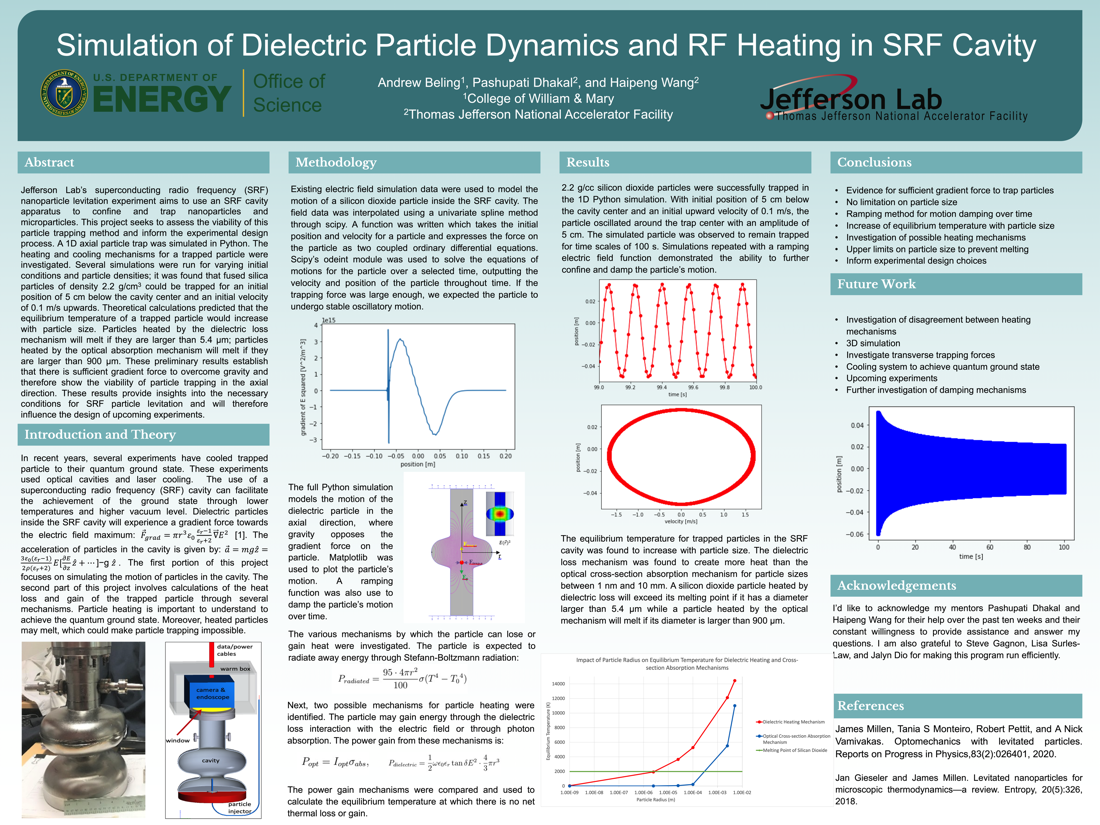Undergraduate Research at Jefferson Lab
Simulation of Dielectric Particle Dynamics and RF Heating in SRF Cavity
Student: Andrew Beling
School: College of William & Mary
Mentored By: Dr. Pashupati Dhakal
Levitation techniques have many important applications in areas such as protein separation, high-speed rail transportation, and induction melting. A new potential application of levitation has emerged in recent years: the use of levitated particles to observe quantum mechanical phenomena on a macroscopic scale. Existing techniques for particle levitation rely on optical cavities and laser cooling. Jefferson Lab's superconducting radio frequency (SRF) nanoparticle levitation experiment aims to use an SRF cavity apparatus to confine and trap nanoparticles and microparticles. This apparatus uses lower frequency electric fields (1.3 GHz), higher vacuum (down to 10-11 mbar) and colder cryogenic temperatures (2 K) compared to traditional methods. These features maximize optomechanical coupling and facilitate achievement of the quantum ground state. This project seeks to assess the theoretical viability of this particle trapping method and inform the experimental design process. A 1D axial particle trap was simulated in Python. Next, the heating and cooling mechanisms for a trapped particle were investigated. Several simulations were run for varying initial conditions and particle densities; it was found that fused silica particles of density 2.2 g/cm3 could be trapped for an initial position of 5 cm below the cavity center and an initial velocity of 0.1 m/s upwards. Theoretical calculations predicted that the equilibrium temperature of a trapped particle would increase with particle size. Particles heated by the dielectric loss mechanism will melt if they are larger than 5.4 μm; particles heated by the optical absorption mechanism will melt if they are larger than 900 μm. These preliminary results establish that there is sufficient gradient force to overcome gravity and therefore show the viability of particle trapping in the axial direction. The high temperatures predicted for microscale particles from dielectric loss indicate that these particles will melt in the trap, posing a problem both for cooling and for maintaining a stable orbit. Higher temperatures may also generate a positive feedback loop as the dielectric loss increases, leading to more dielectric heating and even higher temperatures. These results provide insights into the necessary conditions for SRF particle levitation and will therefore influence the design of upcoming experiments.
[Watch the presentation on YouTube]

Citation and linking information
For questions about this page, please contact Education Web Administrator.
